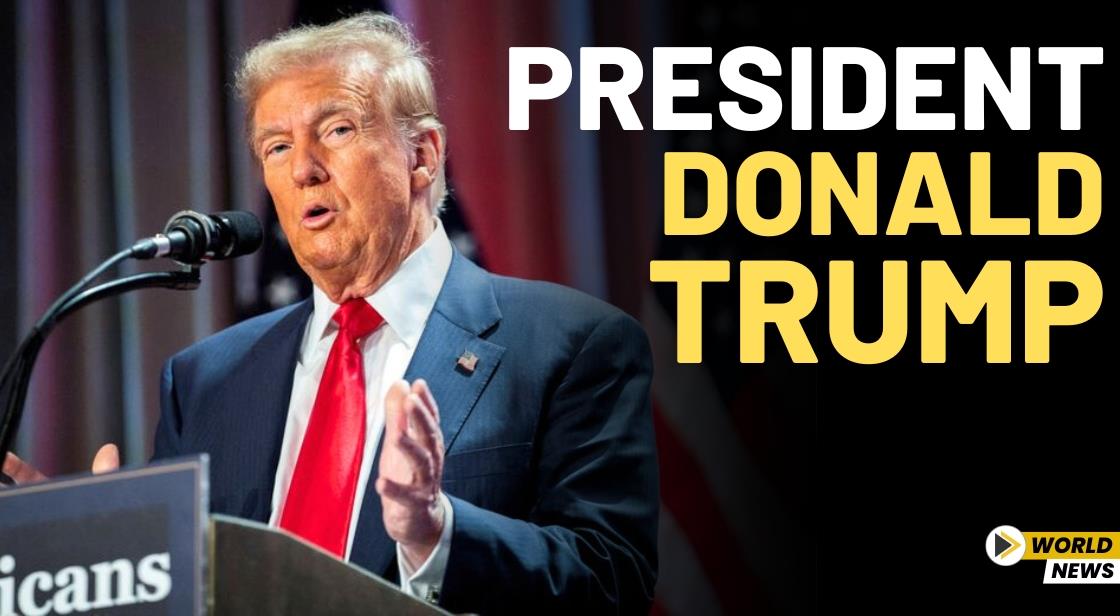Donald Trump’s Steel, Aluminum Tariffs Take Effect as Global Trade War Escalates

News Synopsis
President Donald Trump has officially implemented increased tariffs on all steel and aluminum imports into the United States, a move aimed at restructuring global trade policies to favor domestic industries.
These tariffs, which took effect on Wednesday, include a 25% duty on steel imports and extend to a wide range of downstream products, such as nuts, bolts, bulldozer blades, and soda cans.
European Union and Allied Nations React Swiftly
The European Commission wasted no time in responding to Trump’s aggressive trade policy. Officials announced that starting next month, the EU will impose counter-tariffs on $28 billion (€26 billion) worth of American goods.
Other key U.S. allies, including Canada, Britain, and Australia, have strongly opposed these blanket tariffs. Canada is exploring reciprocal measures, while British Business and Trade Secretary Jonathan Reynolds stated that “all options were on the table” to safeguard national interests. Meanwhile, Australian Prime Minister Anthony Albanese condemned the move, calling it “entirely unjustified” and contrary to the “enduring friendship” between the two nations.
However, he ruled out retaliatory tariffs, emphasizing that escalating trade conflicts harm economic growth and contribute to inflation.
Canada, Mexico, Brazil, and South Korea Among the Most Affected
The nations most impacted by these tariffs include Canada—America’s largest supplier of steel and aluminum—along with Brazil, Mexico, and South Korea. These countries had previously benefited from exemptions or quota systems, but with Trump’s renewed trade policies, those privileges are now revoked.
Trump’s Last-Minute Threat to Canada
As the tariff deadline loomed, tensions between the U.S. and Canada escalated further. On Tuesday, President Donald Trump threatened to double tariffs on Canadian steel and aluminum exports to 50%.
However, he reversed course after Ontario Premier Doug Ford agreed to halt his province’s plan to impose a 25% surcharge on electricity exports to Minnesota, Michigan, and New York. In response, Ford announced that he and Canadian Finance Minister Dominic LeBlanc would travel to Washington for discussions with U.S. Commerce Secretary Howard Lutnick on revising the U.S.-Mexico-Canada Agreement (USMCA).
Despite this momentary de-escalation, financial markets reacted with volatility, reflecting broader concerns about Trump’s aggressive tariff policies. Nonetheless, the White House described the U.S. pressure on Canada as a “win” for the American people.
U.S. Steel Industry Welcomes Tariff Restoration
The U.S. Customs and Border Protection agency preemptively cut off duty-free steel and aluminum imports under quota arrangements, enforcing the new tariffs before the midnight deadline. This move was praised by the American steel industry, which has long sought stronger protective measures.
Philip Bell, President of the Steel Manufacturers Association, expressed optimism about the policy, stating: “By closing loopholes in the tariff that have been exploited for years, President Trump will again supercharge a steel industry that stands ready to rebuild America.” He emphasized that these tariffs would support job creation and industrial investments while curbing unfair trade practices.
Canada Mulls Countermeasures Amid Leadership Transition
Trump’s tariffs come at a crucial time for Canada, as Prime Minister Justin Trudeau prepares to step down, handing over leadership to his successor, Mark Carney. Carney, who recently won the Liberal leadership race, has yet to engage with Trump on the issue.
On Monday, Trump reiterated his long-standing critique of Canadian trade policies, even making a controversial social media remark that Canada should “become our cherished Fifty-First State.”
Meanwhile, Canadian Energy Minister Jonathan Wilkinson suggested potential countermeasures, including restricting oil exports to the U.S. or imposing duties on minerals. Canada currently supplies around 4 million barrels of crude oil per day to the U.S., primarily to Midwest refineries. Additional tariffs on American ethanol are also under consideration.
USMCA Trade Deal Under Scrutiny
Despite the USMCA ensuring largely duty-free trade between the two nations, Trump continues to target Canada over issues like high dairy tariffs. Recently, Ottawa secured a one-month exemption from Trump’s 25% blanket tariffs, citing compliance with the USMCA. However, beginning in April, Canada will face new reciprocal tariffs aimed at aligning U.S. duties with global trade norms.
China Also Targeted in Trump’s Trade Crackdown
China, which remains the second-largest supplier of aluminum to the U.S., is already subjected to high tariffs due to alleged dumping and subsidies. Over the past month, Trump further imposed a 20% tariff on Chinese imports in response to concerns over fentanyl trafficking.
Economic Concerns Mount as Trade War Heats Up
Trump’s aggressive tariff policies have created significant economic uncertainty, with experts warning of potential recession risks. Investor and business confidence has been shaken, as reflected in a recent small business sentiment survey, which showed a decline for the third consecutive month. Additionally, a New York Federal Reserve survey highlighted growing consumer concerns over inflation, personal finances, and job market stability.
With trade tensions escalating and retaliatory measures looming, the global economic landscape remains highly uncertain. As Trump continues to push his protectionist agenda, the future of international trade hangs in the balance.
You May Like









